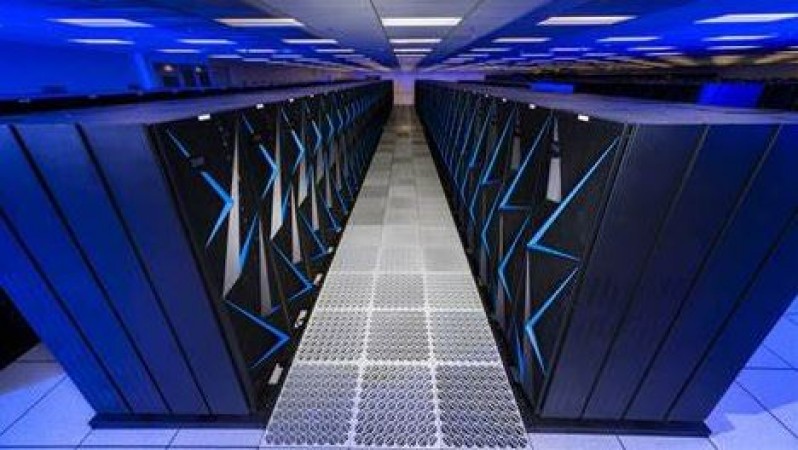
In the ever-expanding digital age, the demand for faster and more powerful computers continues to surge. Exascale computing is an exciting frontier in the world of supercomputing that promises to push the boundaries of computational capabilities. This article delves into the realm of exascale computing, exploring its definition, challenges, applications, benefits, and potential future possibilities.
Understanding Exascale Computing
2.1 What is Exascale Computing?
Exascale computing refers to the ability of a supercomputer to perform one quintillion calculations per second, i.e., 10^18 floating-point operations per second (FLOPS). This level of computing power far surpasses the current petascale computing, which operates at 10^15 FLOPS. Exascale computing represents a significant leap in computational capacity, enabling complex simulations and data analyses at unprecedented speeds.
2.2 The Need for Exascale Computing
The exponential growth of data and the increasing complexity of scientific simulations and applications necessitate the development of exascale computing. Fields such as climate research, drug discovery, and astrophysics demand immense computational resources to tackle intricate problems and extract meaningful insights from massive datasets.
The Road to Exascale Computing
3.1 Evolution of Supercomputing
Supercomputing has evolved remarkably over the decades. From early mainframes to modern clusters, each generation brought enhanced performance and capabilities. The journey to exascale computing has been marked by continuous innovation and advancements in hardware and software technologies.
3.2 Challenges on the Path to Exascale
Achieving exascale computing poses numerous challenges, including power consumption, system reliability, and scalability of algorithms. The sheer magnitude of data handling and processing requires groundbreaking solutions to optimize performance while managing energy consumption.
3.3 Approaches and Solutions
To tackle the challenges of exascale computing, researchers are exploring novel approaches, such as specialized accelerators, advanced cooling techniques, and parallel programming models. These solutions aim to maximize computational efficiency while minimizing power usage.
Components of an Exascale Supercomputer
4.1 High-Performance Processors
At the heart of an exascale supercomputer are high-performance processors capable of handling enormous computational workloads. Modern processors leverage multiple cores and threading to parallelize tasks effectively.
4.2 Advanced Memory Systems
An exascale supercomputer requires a sophisticated memory hierarchy to keep up with the processor's speed. High-bandwidth memory and cache systems help reduce data access latency and enhance overall performance.
4.3 Efficient Interconnects
Interconnects play a crucial role in exascale computing, ensuring seamless communication between thousands of processors and memory modules. Low-latency, high-bandwidth interconnects enable efficient data exchange.
4.4 Software and Programming Models
The software stack of an exascale supercomputer must be optimized for parallel computing. Innovative programming models and frameworks facilitate code parallelization and efficient utilization of hardware resources.
Applications of Exascale Computing
5.1 Climate Modeling and Weather Forecasting
Exascale computing empowers climate scientists to develop more accurate and detailed climate models, aiding in long-term climate predictions and extreme weather event forecasts.
5.2 Drug Discovery and Biomedical Research
The vast computational power of exascale computing enables intricate simulations of biological processes, significantly accelerating drug discovery and biomedical research.
5.3 Astrophysics and Cosmology Simulations
Astrophysicists utilize exascale simulations to study the universe's formation, galaxy interactions, and black hole dynamics, shedding light on fundamental cosmic mysteries.
5.4 Engineering and Materials Design
In the engineering domain, exascale simulations allow for the design and optimization of complex structures, materials, and manufacturing processes, leading to groundbreaking innovations.
Implications and Benefits of Exascale Computing
6.1 Scientific Advancements
Exascale computing is a game-changer for scientific research, driving breakthroughs in various disciplines, including physics, chemistry, and biology.
6.2 Societal Impact
The profound insights gained from exascale simulations can positively impact society, leading to better-informed policy decisions and solutions to global challenges.
6.3 Economic Growth and Innovation
Exascale computing fosters innovation and economic growth by empowering industries to tackle complex problems and drive technological advancements.
Challenges and Limitations
7.1 Power Consumption and Cooling
Exascale supercomputers demand tremendous power, raising concerns about energy efficiency and the environmental impact.
7.2 Data Management and Storage
Handling and storing the colossal amount of data generated by exascale computing requires innovative data management and storage solutions.
7.3 Algorithm Scalability
Developing algorithms that can scale efficiently on exascale architectures is a persistent challenge, necessitating algorithmic innovations.
Future Possibilities Beyond Exascale
8.1 Quantum Computing and Hybrid Approaches
As exascale computing reaches its limits, quantum computing and hybrid approaches offer potential avenues for even greater computational power and problem-solving capabilities.
8.2 Beyond Classical Simulation
Beyond exascale, researchers are exploring non-classical computing paradigms like neuromorphic and optical computing, paving the way for new possibilities in computation.
Exascale computing stands as a testament to human ingenuity and determination to unravel the mysteries of the universe and address pressing global challenges. Its remarkable speed and precision open doors to scientific breakthroughs, societal improvements, and economic growth.
Android and iOS to be the most Fundamental Software’s of all time
From Thin Air to Freshwater: The Revolution of Air-to-Water Technology